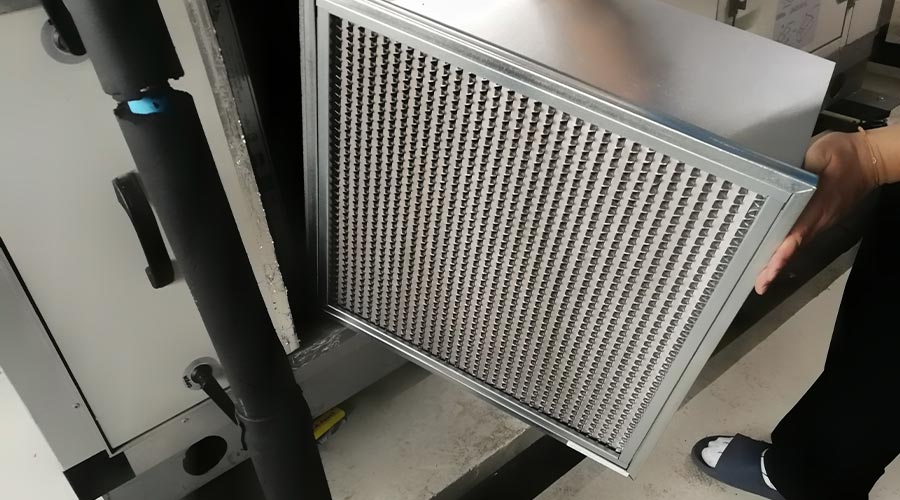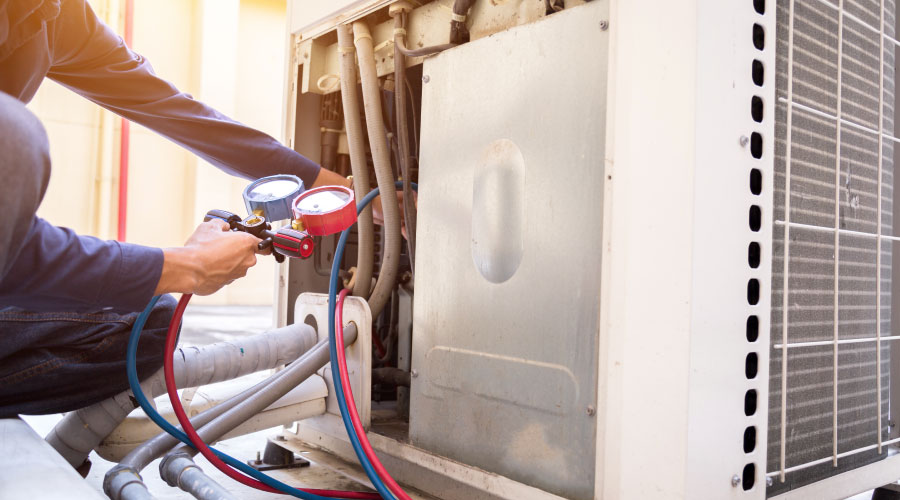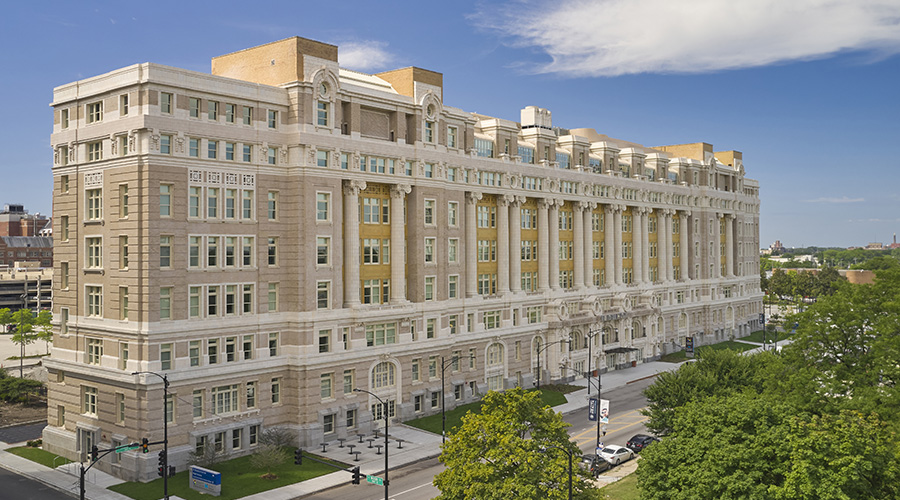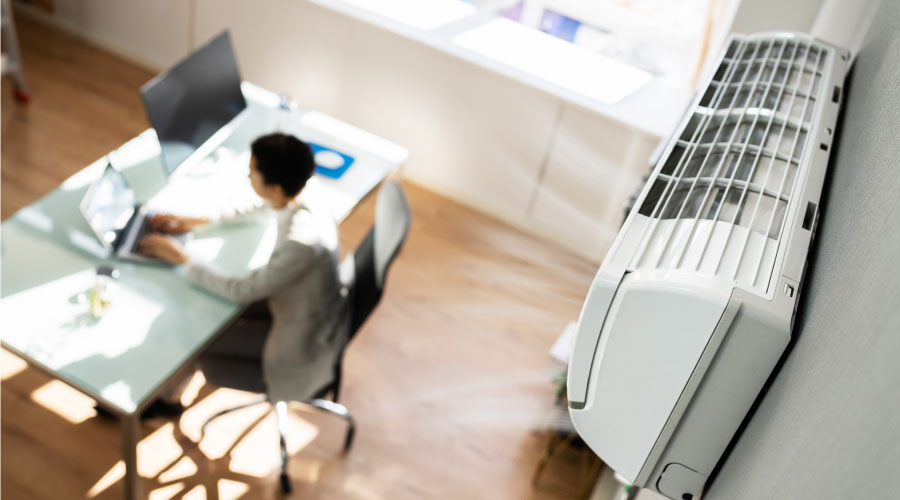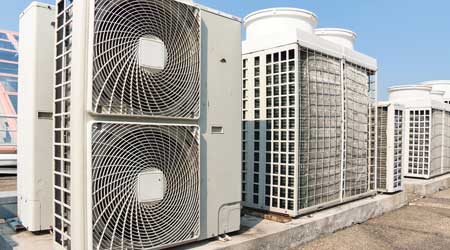 VRF condensing units can be installed wherever there is space — inside or outside of a building.
VRF condensing units can be installed wherever there is space — inside or outside of a building.Is a VRF Right for Your Trading Floor Cooling Needs?
High heat loads present cooling challenges for trading floors. Here's how to know if a variable refrigerant flow (VRF) system might be the best solution.
VRFs, or variable refrigerant flow systems, have been employed in buildings overseas since the 1980s, but have become a mainstay in the United States only in the last decade. Although most common in schools and hotels because of their ability to provide different zone-specific heating/cooling, VRFs can actually be employed very effectively to provide additional cooling on a trading floor or even in a typical office environment. Where a base building system is already handling the heating and ventilation, a VRF provides additional, less costly heating/cooling while being extremely space efficient.
There are two types of VRFs:
• Heat pump. A heat pump VRF system either heats or cools the space, and must be changed from heating to cooling and vice versa when building needs or seasons change. Ideal for an enterprise facility where a single management arm determines the temperature for the entire facility, or for supplemental cooling of interior loads, such as a trading floor.
• Heat recovery. A heat recovery system can simultaneously heat and cool different spaces, trading heat between the zones to improve efficiency. Typically employed in hotels or office buildings where occupants desire different temperature set points, some in heating mode, others in cooling. This system is also very effective when treating both interior and perimeter zones simultaneously.
Trading floors present challenges
When situated in a typical office building, a trading floor is unique. For one thing, trading floors carry extremely high heat loads. A typical trader’s workstation could have up to 12 monitors and three computers. Working side-by-side with dozens of traders, they’re often in extremely close quarters, utilizing bench seating across an open office area. This dense layout means most high-rise office buildings can’t meet the high cooling load needs of a trading floor. Additionally, trading floors may be in operation all hours of the day, even over weekends. This puts additional demands on the heating and cooling systems — around the clock.
Another point that makes trading floors unique: They are mission critical spaces. A cooling system failure can result in overheating servers that could shut down a network. Network shut-down while the market is open can cause a great financial loss for a trading firm.
A trading floor commonly takes up a full floor or two in a downtown high-rise office building. This presents a number of issues.
For one thing, antiquated base building heating and cooling systems are unable to provide adequate cooling to maintain daily trading floor operations. A typical high-rise office building will provide cooling up to 5 watts per square foot, while a trading floor may require nearly double that — 8 to 10 watts per square foot. This gap can’t be solved by installing a localized air conditioning unit for a conference room or two. Instead, the additional supplemental cooling system must meet the needs of the entire floor.
Another challenge for trading floors located in a typical office space is that the base building infrastructure falls short of trading floor design needs. Small ceiling plenums and deep beams exist in most high-rise office buildings, making it difficult to add piping and ductwork necessary to provide more cooling capacity to the space.
A raised floor is one way to bring additional cooling in trading floors and other mission critical spaces. But because the floor-to-ceiling heights in most older office buildings are short, or can’t be reduced any further, creating a raised floor can be challenging.
Related Topics:











